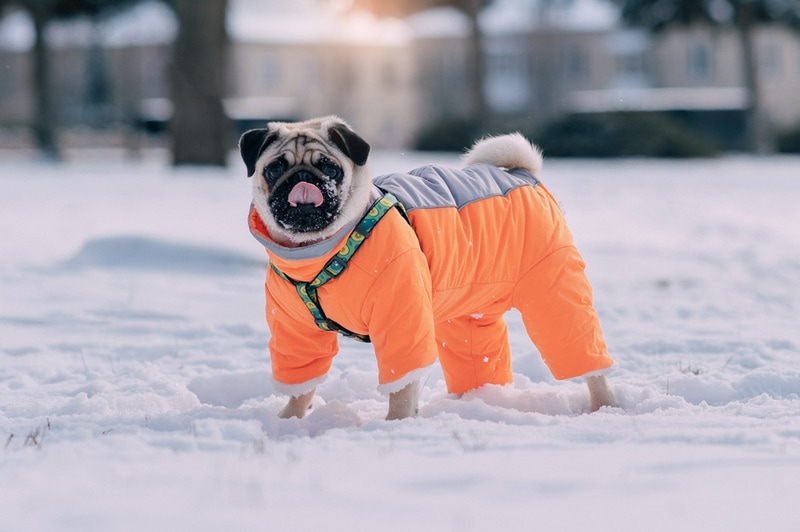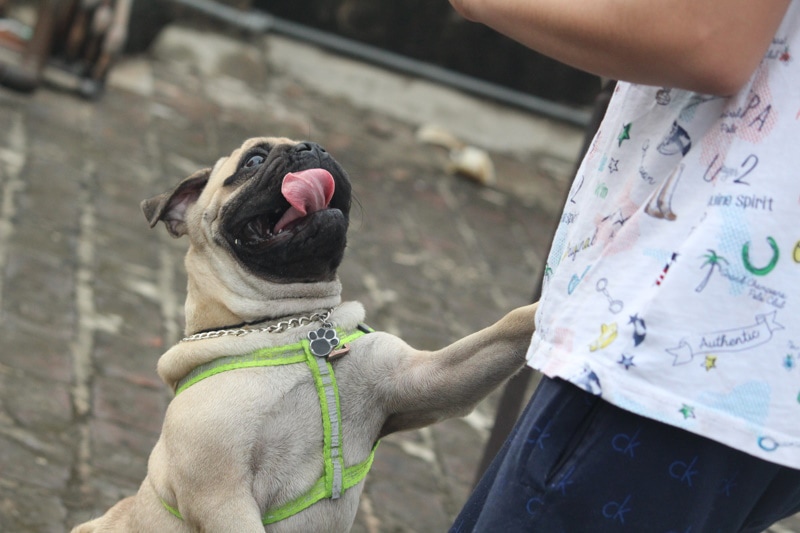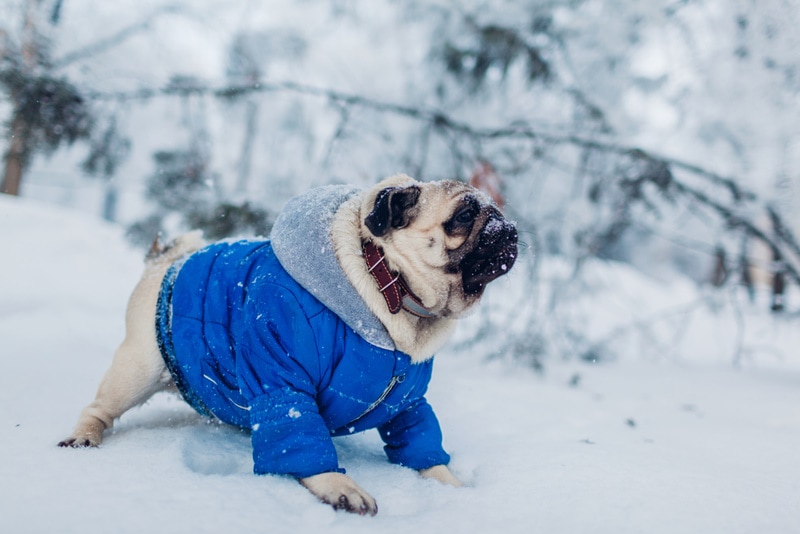Do Pugs Get Cold? Vet-Reviewed Facts & Tips for Staying Warm
By Lorre Luther
Updated on

Pugs are sweet, playful dogs that love being the center of attention. They get along well with kids and most other dogs and often make wonderful family pets. They’re bred as companion animals and are typically easy to train due to their eager-to-please natures. Pugs are small dogs; most reach between 10 and 13 inches at the withers and weigh around 14 to 18 pounds.
As brachycephalic dogs, Pugs aren’t suited to excessive exercise. But are extra precautions in order when taking your pug outside during the winter? Do they need clothing when heading for a walk when temperatures drop? Toy breeds, including Pugs, get chilly more easily than larger dogs, and they benefit from a jacket or coat when temperatures drop below 45ºF.1
What’s Too Cold for Pugs
Some Pugs may begin to feel a bit uncomfortable when the mercury drops to below 45ºF. Small dogs like Pugs are at increased risk of developing hypothermia outdoors for long periods when temperatures are closer to freezing. This is due to their proportionately larger surface area to mass ratio. It’s generally unsafe for most dogs to spend much time outside when temperatures fall to 20ºF.

Foul Weather
Dogs can easily become too cold at deceptively warm temperatures when there’s rain, limited sunlight, or high winds. Dogs that feel chilly when the temperature is 45ºF may begin to get cold when resting in the shade. Dogs also cool off faster in wet and rainy conditions as their fur collects water reducing the temperature at which they begin to feel cold. Wind and rain together can be a particularly chilling combination, even at relatively warm temperatures.
Health Conditions
Factors such as age, weight, and health can also impact a dog’s ability to tolerate the cold. Older pets often have less cold tolerance and become uncomfortable at relatively warm temperatures. Many have joint conditions such as osteoarthritis that can make moving around in cold weather painful. Extremely thin pets and some sick dogs also have trouble staying warm.
Allow your pet to guide you when determining if they need some winter protection. Some dogs may love wearing a jacket on 45ºF days, while others may find it too constricting. Pay attention to how your buddy is doing and make any needed adjustments in response. Dogs often shake, shiver, and become anxious when they’re cold. On walks, cold dogs sometimes head for warm locations or stand with one paw off the ground. Head indoors as quickly as possible to let your pet warm up if they start showing any discomfort while outside, and adjust their wardrobe on future walks.

What Types of Winter Protection Do Pugs Need?
If you live in a moderate climate, consider investing in a winter coat for those days when the temperature drops. Look for brands that cover your buddy’s back and tummy but leave sufficient room for your dog to use the bathroom comfortably. The fit should be snug but not tight and protect the base of your pet’s tail to its neck. Ensure the jacket doesn’t pinch sensitive areas like your pet’s underarms and neck.
Jackets
Older dogs that become chilled in warmer temperatures may benefit from a light jacket on cooler days. Sweaters work well for indoor wear if your buddy consistently shows signs of being too cold indoors. Keep an eye on pets playing outside while wearing jackets to ensure they don’t overheat after becoming active. Pugs sometimes have difficulty cooling off due to their short facial structures, so make sure to monitor your buddy and intervene if they start showing signs of being too hot such as panting or rapid breathing.

Paw Protection
Wintertime can be particularly hard on dogs’ paw pads, as they often end up with painful cracks due to contact with harsh chemicals such as de-icers and walking on cold hard surfaces. Some veterinarians recommend using a protective paw wax when walking dogs in nasty winter weather. Sticking to softer surfaces during winter walks can also help keep dogs’ paws healthy.
Dogs that are particularly sensitive to the cold may benefit from wearing booties when there’s snow or ice on the ground. Make sure to regularly check your pet’s paws during the colder months of the year and treat any cracks as soon as they appear to keep your dog’s paws in top shape and prevent the development of deep, painful cracks that often require veterinary treatment.
Final Thoughts
Pugs are fun, playful dogs that quickly become adored family members. As a toy breed, Pugs often have trouble regulating their temperatures in cold weather, so they sometimes benefit from extra protection from the elements. Pugs aren’t generally the most active dogs, but they require two daily walks even when the weather is nasty. Because Pugs are so small and close to the ground, they require jackets at temperatures well above freezing. Pugs’ paws also benefit from a bit of extra attention during the winter months. Consider using a paw balm or protecting your pet’s paw with booties if you’re heading out for a break on a day with snow and ice on the ground to prevent the development of painful, cracked paws
Featured Image Credit: ZaitsevMaksym, Shutterstock













